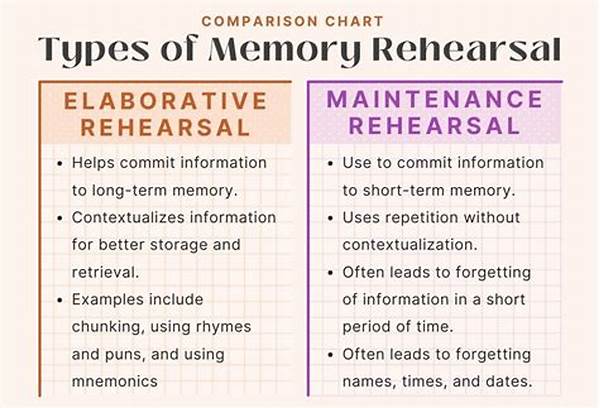Once upon a time, in a bustling city teeming with creative souls, there was a community theatre company named “Harmony Stage.” This troupe thrived on their unique approach to bringing stories to life, relying not just on individual talent but on the power of collaboration. Their secret weapon? A method known as collaborative rehearsal strategy development. Through this approach, actors, directors, and crew members all had an equal voice, contributing to the creation of compelling performances.
Read Now : Overcoming Cognitive Biases In Thinking
The Art of Collaborative Rehearsal
In the heart of Harmony Stage’s process, collaborative rehearsal strategy development served as the key to unlocking extraordinary performances. By combining diverse perspectives, the ensemble created a rich tapestry of artistic expression. Each rehearsal was a journey; actors led improvised scenes, directors offered visionary insights, and stagehands shared practical solutions. With collaborative rehearsal strategy development, the entire team grew stronger, creativity blossomed, and bonds between members deepened. The art of collaborative rehearsal wasn’t just about refining plays—it was about crafting a shared vision, understanding each character’s journey, and nurturing an environment where everyone thrived creatively. This collective effort ensured that every performance was fresh, engaging, and deeply resonant with the audience.
Unveiling the Process
1. Beginning with Open Dialogue: At Harmony Stage, open dialogue kicked off each collaborative rehearsal strategy development session, allowing every member to voice their thoughts.
2. Embracing Improvisation: Actors delved into scenes without a script, tapping into spontaneous creativity under the collaborative rehearsal strategy development framework.
3. Feedback Loops: After each scene, immediate feedback shaped the direction, an essential component of the collaborative rehearsal strategy development process.
4. Incorporating Tech Solutions: Stagehands experimented with lighting and sound to complement the narrative through collaborative rehearsal strategy development.
5. Reflection and Adaptation: The team regularly reflected on their progress, making necessary adaptations, showing that collaborative rehearsal strategy development was a fluid and dynamic process.
Building a Culture of Collaboration
Within the walls of Harmony Stage, building a culture of collaboration was a journey of its own. The company fostered an environment where every individual felt valued and heard. In practice, collaborative rehearsal strategy development encouraged actors to bring personal experiences into their roles, giving performances authenticity and depth. This method broke barriers between directors and actors, creating a democratic space where all ideas were considered equal. By blending creativity with empathy and teamwork, the troupe found that collaborative rehearsal strategy development not only enhanced the artistic process but also transformed personal relationships, building a supportive community where each individual contributed to the collective success.
Tenets of Collaborative Development
1. Inclusivity: Every voice matters in collaborative rehearsal strategy development, creating a mosaic of perspectives.
2. Trust-Building: Fostering trust amongst the team enhances the impact of collaborative rehearsal strategy development.
3. Flexibility: Adaptability is crucial, with ideas evolving throughout the collaborative rehearsal strategy development process.
4. Conflict Resolution: Collaborative rehearsal strategy development thrives on tackling conflicts with empathy and understanding.
Read Now : Standout Songs For Theater Auditions
5. Shared Leadership: Leadership is shared across roles during collaborative rehearsal strategy development.
6. Communicating Vision: Aligning on a common goal elevates the impact of collaborative rehearsal strategy development.
7. Innovation: Embracing new techniques strengthens collaborative rehearsal strategy development.
8. Commitment to Growth: Personal and collective growth is a core conviction in collaborative rehearsal strategy development.
9. Open Communication: Dialogue is continuous and encouraged in collaborative rehearsal strategy development.
10. Empathy: Understanding each other deepens collaborative rehearsal strategy development.
Creating Connections Through Collaboration
Every scene woven by Harmony Stage was a testament to the magic that is born from collaborative rehearsal strategy development. In rehearsal spaces, actors found themselves more connected to their roles, infused with the inspiration of their peers. Directors reevaluated scenes through diverse lenses, enriching the story. As time progressed, their rehearsal spaces became mini ecosystems brimming with ideas, laughter, and sometimes heated debates. Each session concluded with hugs and words of appreciation, a reminder that their work wasn’t just a job, but a passion project founded on the bonds they created together. Truly, collaborative rehearsal strategy development was the driving force behind their innovative and community-centered approach to theatre.
Conclusion and Reflection
As the final curtain fell on their yearly production, they gathered together for one last curtain call. The audience’s standing ovation was more than applause; it was the culmination of their efforts in collaborative rehearsal strategy development. Reflecting on their journey, they appreciated the shared struggles and triumphs, each moment having brought them closer as a team. They learned that through unity and a collaborative approach, their productions had not only entertained but also strengthened their community, leaving an impact far beyond the stage. The power of collaborative rehearsal strategy development was clear, proving that when every voice is heard, art can transcend boundaries and connect hearts.
A Story of Growth and Vision
Throughout this journey, Harmony Stage learned that collaborative rehearsal strategy development was an ever-evolving process. With each production, they embraced growth, learning from past experiences and aiming for excellence in future endeavors. Every shared note, whispered idea, and collaborative effort forged their unique identity within the vibrant tapestry of theatre arts. As they looked to the future, they carried forward the legacy of collaboration, knowing this was only the beginning of their journey into deeper creative exploration. Through collaborative rehearsal strategy development, they dared to envision a world where creativity knew no bounds, and collective storytelling would transform the way art was perceived and appreciated.
